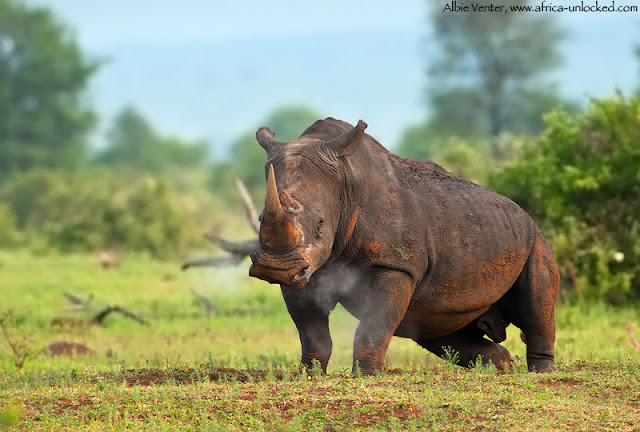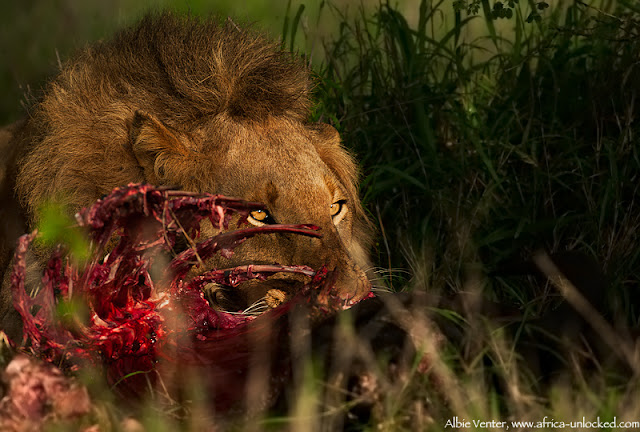 |
| Cheetah Learning school. An eight month old cheetah hones his hunting skills while mom supervise. |
I have just returned from the last of this years Kenyan Migration Safaris. My season this year actually started in May already with a flying Safari through some of Heritage Hotels properties for Africa Geographic magazine. Although this trip took me through Tsavo and Samburu in the North it also brought me to the Mara before the main migration season. Being May, the long rains was in full swing but it did allow me to view the Mara again as I only saw it when I lived there way back in 2004. Wonderfully green with waist high grasses and breeding birds all around. A challenging time to drive a round the Mara’s black cotton soil but also a rare privilege to see the Mara as few see it. Have a look at the article below and if you do not see it in print on the shelves during November click on the image to link to the PDF article online.
 |
| Lion Lenses and Little Planes, an Africa Geographic article on flying safaris through Kenya |
To quote friend and colleague Greg du Toit, the Mara is a great place to fill up memory cards but a very difficult place to get anything new or unique. It is one of the most photographed parks in the world. With these challenges clearly in mind I set off with guests in tow seeking new and exciting shots.
Although its always very special observing leopards, merely photographing them as a portrait doesn't do the animal much justice.
 |
| A young leopard strolls through the grassland backlit by the setting sun. |
In order to capture its true character and although a much trickier shot, opting for a motion blur image is a more accurate reflection of their character in the dense undergrowth where it makes its home.
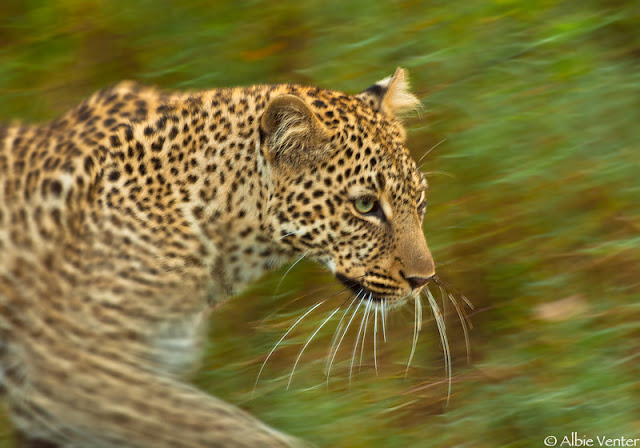 |
| A trickier shot but when done well a motion blur image really stands out. |
The rising sun illuminating steam from a freshly killed wildebeest carcass provided the perfect backdrop for capturing a familiar scene of feeding lions in a unique manner. Photographing backlit is very rewarding, especially in such dramatic sircumstances, yet I often find that people would rather go for the more conventional front lit shots, even though these have been done millions of times.
 |
| A lioness pause momentarily as the rest of her pride devours a wildebeest. The mist in this scene comes from the freshly killed wildebeest. |
With its open habitat and clean backgrounds the Mara is a great place to capture action. Having done the “
Cheetah on the Termite Mound” images countless times in the past, my personal goal this year was to get some action shots. Throughout the various trips we witnessed a dozen or so kills, ranging from crocs taking wildebeest to lion and the impressive high speed chases of cheetah. Realistically they are often difficult to photograph as it happens too far away or is obscured by grass. A few proved to be in range such as this lioness below taking a young Topi.
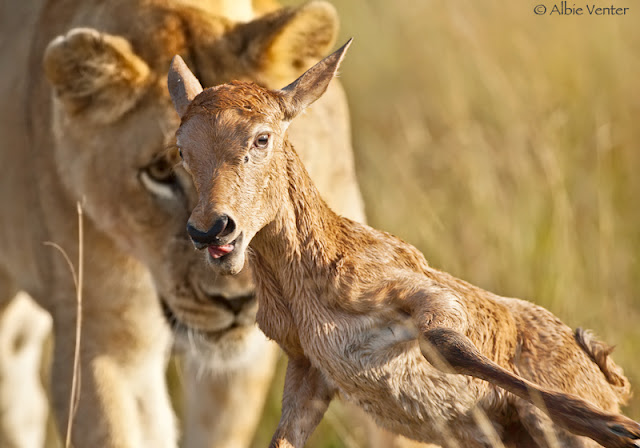 |
| A lioness about to grab a young Topi. |
Action wasn’t limited to kills only and playing lions were equally impressive.
 |
| Playing Lions are allways very photogenic. |
We saw a few servals on the plains, one of which spectacularly killed a young Scrub hare in clear view. Capturing the essence however of a determined Serval hunting through the long grass provided yet another challenge as I wanted to move away from crispy portraits.
 |
| Because its allways a rare sight one can be forgiven for doing for the safe crispy portraits of Serval Cats. But Motion Blur captivates the essence of the cat staliking throught its grassy domain. |
Also very rewarding is capturing the quieter more pensive moments in the bush and playing with spectacular light allways helps.
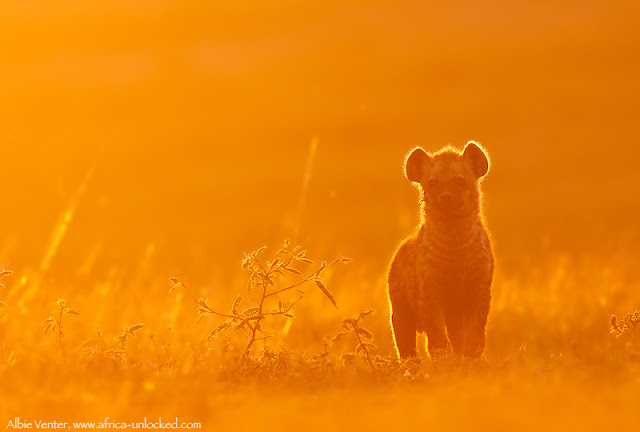 |
| Beautifull light and nothing else makes even the misunderstood Hyena look stunning. |
We were privileged to follow this mother and her only surviving cub belwo for two weeks. During this time she used our vehicles several times as vantage points to scan for prey and remarkably were were treated to one of nature’s most emotional dramas as she released her kill for the cub to hone its hunting skills (Check out the first pic above). Being such a dramatic event I will post more images in a next post to share the entire event.
 |
| Her breath condensates in the cold mornuing air. We followed this mother cheetah and her cub for a few weeks. |
Then the Mara is nothing without the dramatic and well known wildebeest crossings. Sitting in the heat of the day with 30 other cars only to get harshly lit images is certainly not my way of having fun on safari. Only a handful of places offer you the ultimate experience and C4 Safaris’ location provided the perfect platform to view our “own” crossings. Yet how does one capture this well photographed phenomenon in a unique way. Here is my latest take on it.
 |
| A nice new angle of a familiar scene |
The most difficult large animal to see and photograph is Black Rhino. The first two weeks produced not a single sighting and only on the last morning of guests stay they were fortunate so see this animal out on the open plains.
 |
| The highly threatened and endangered Black Rhino |
So thats it for now. For those interested in joining us on Safari next year, contact us by clicking on the below links for a wide variety of trips. Cheers Albie
 |
| Private Photographic Safaris throughout East and Southern Africa |

